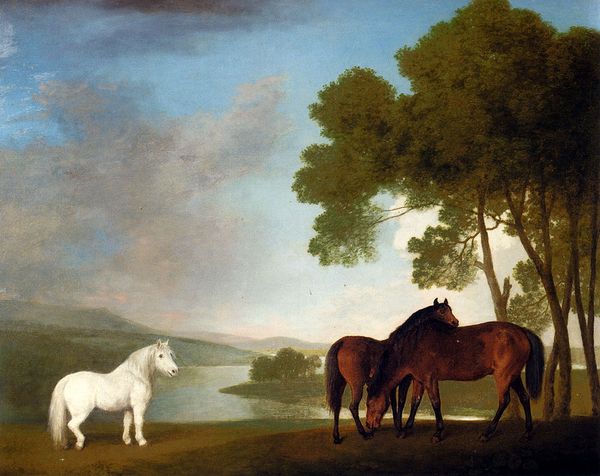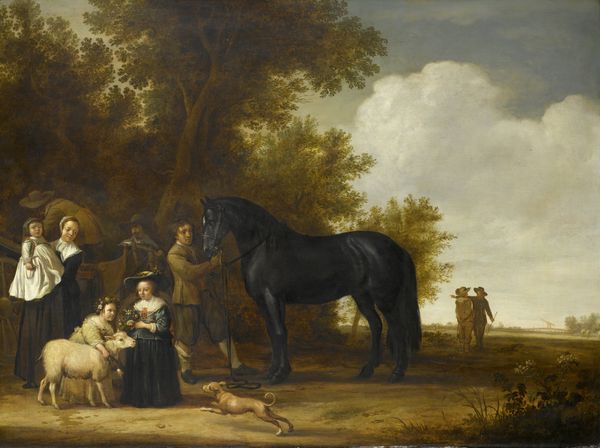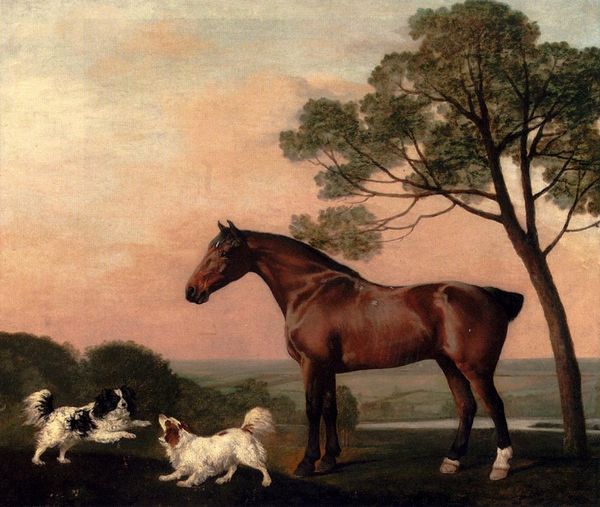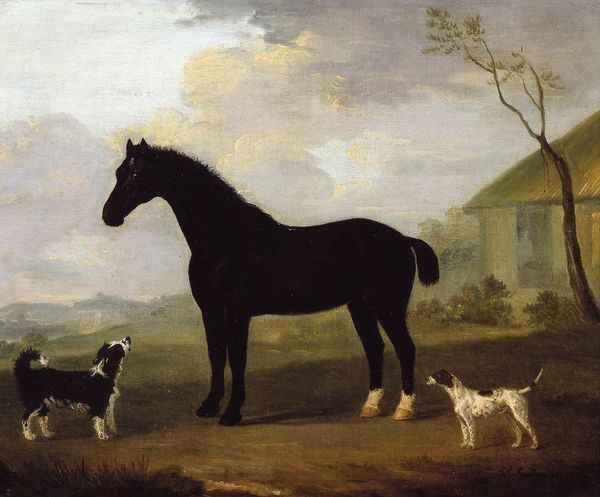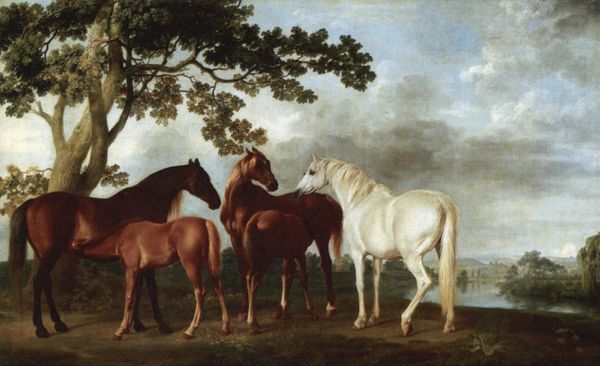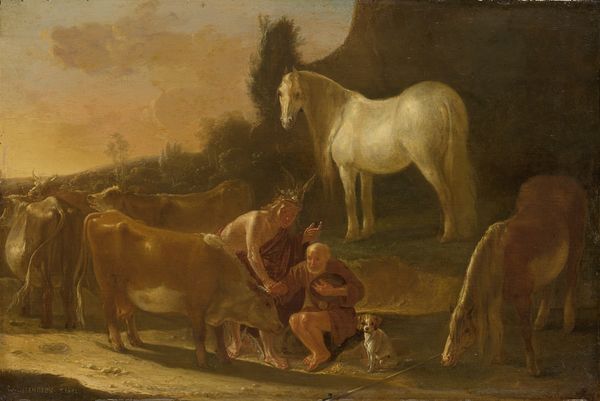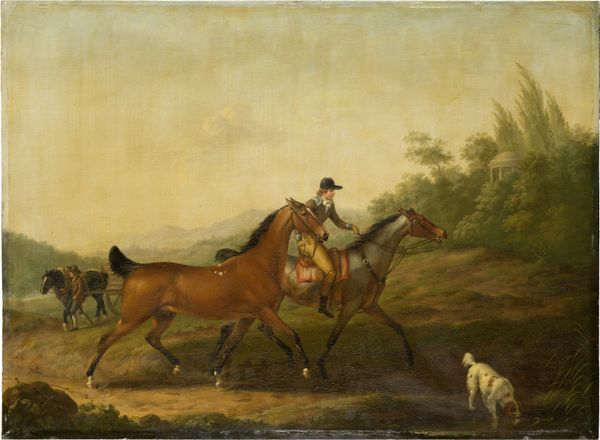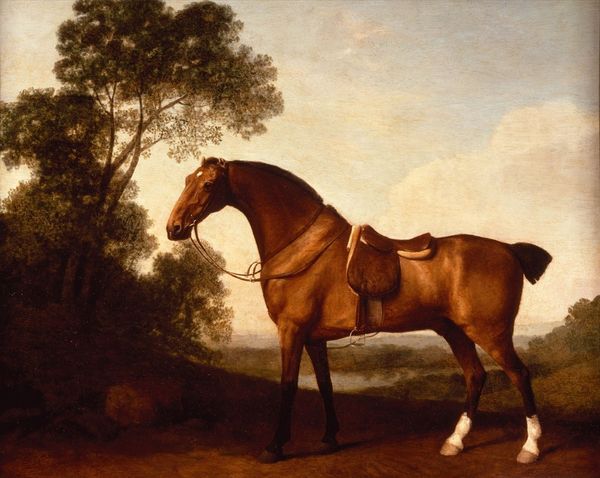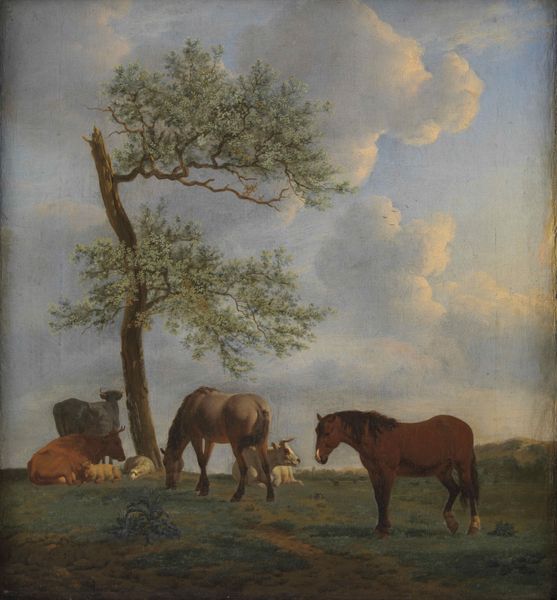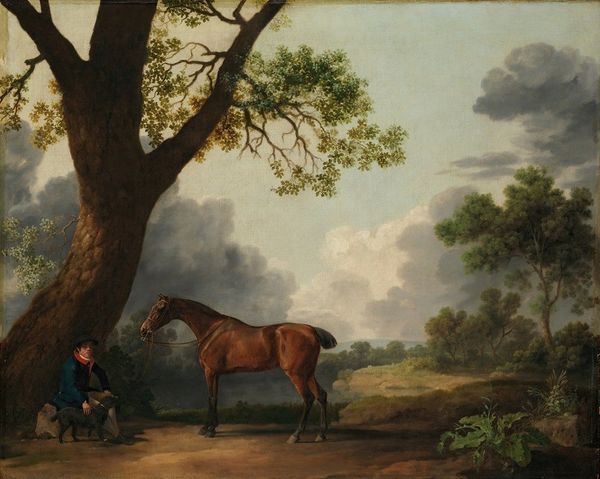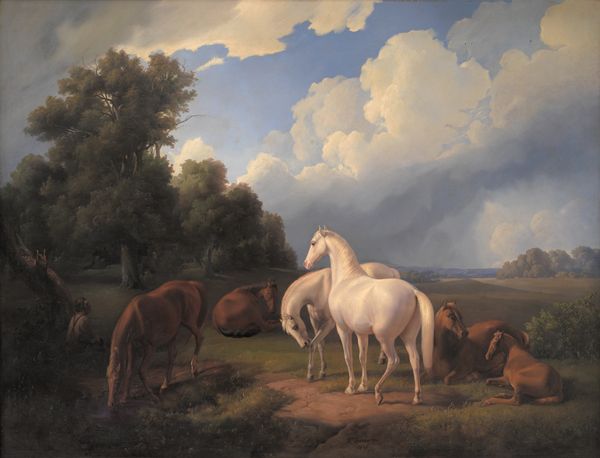
painting, oil-paint
#
animal
#
dutch-golden-age
#
painting
#
oil-paint
#
landscape
#
oil painting
#
realism
Dimensions: height 23.3 cm, width 29.6 cm, depth 0.9 cm
Copyright: Rijks Museum: Open Domain
Curator: Alright, let's talk about "Two Horses in a Meadow near a Gate," crafted in 1649 by Paulus Potter. Editor: Immediately, there's something deeply pastoral here, almost meditative. The contrast between the dark and white horses strikes me too. Is it just me, or is there something slightly melancholic in that misty horizon? Curator: Well, the formal composition indeed creates a sense of serenity. Observe how Potter masterfully employs realism; the texture of their coats rendered in striking detail, the atmospheric perspective softening the distant cityscape. It’s all meticulously constructed to evoke tranquility. Editor: Meticulously, yes, but with a wink, perhaps? The horse looking directly at us over the gate seems so incredibly…knowing. Potter wasn't just painting animals, was he? It’s more than just realism; it almost borders on the allegorical, don’t you think? A statement on freedom or captivity maybe? Or maybe I’m just projecting! Curator: A projection based in good faith. Remember the Dutch Golden Age. Landscape painting elevated but still imbued with national pride. Horses, symbols of status. Land ownership on display in art of remarkable detail and symbolism. Editor: Okay, alright, so status symbols prancing around a misty meadow. That makes sense. But does status always have to look this… pensive? I keep coming back to it, it feels as if something more profound is hinted at; an undercurrent, a murmur of something ineffable. Look at how light caresses that darker horse! The animal almost blends in with the gate, framing the entire background composition, as though the subject were a fleeting scene of nostalgia. Curator: A fair reading, considering his choices. Ultimately, this painting becomes more than simply art of barnyard bliss. What we perceive becomes integral to its layered interpretations. Editor: Exactly! These oil paints and canvases from the 17th century become conduits to understanding a world back then, or what we wanted the world to look like back then… Thanks for shedding more light on that; what initially struck me was maybe melancholy can be seen, now, more as perspective, when observed with an educated view.
Comments
rijksmuseum about 2 years ago
⋮
Two horses stand on a little rise before a sweeping meadow landscape with cattle. The town of Delft is visible in the distance. The animals’ fluttering tails and manes, and the low-lying clouds, signal that the weather is raw and windy. Potter enhances the liveliness of the depiction by placing the grey horse before a dark boscage and the chestnut horse before a light, cloud-filled sky.
Join the conversation
Join millions of artists and users on Artera today and experience the ultimate creative platform.
